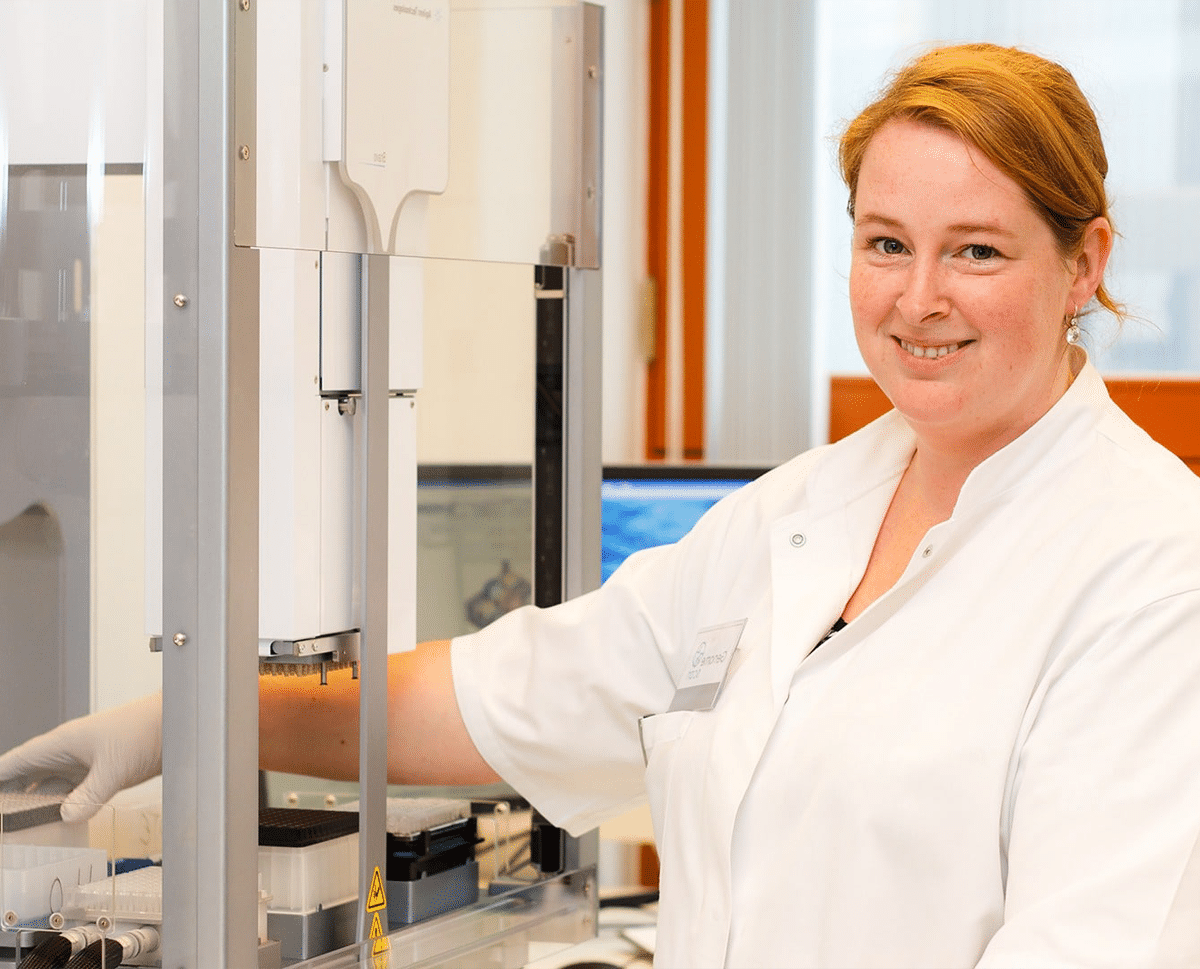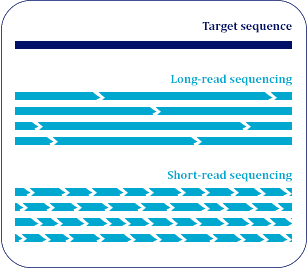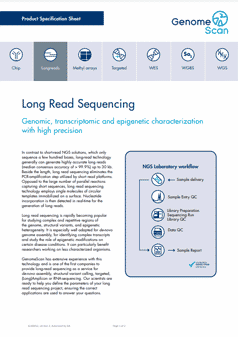Single Molecule, Real-Time (SMRT) Sequencing technology delivers exceptional read lengths without compromising throughput or accuracy.
Retrieving HiFi sequencing reads up to 30kb, long read sequencing overcomes the challenges that short-reads have in difficult regions such as repetitive elements and large structural variations.
Long Read Sequencing

Why choose long read sequencing?

Main advantages
Next generation sequencing (NGS) technologies typically make use of generating 75-300bp long reads, which are then either de-novo assembled in a genome or mapped to a reference genome. Complex regularity elements or highly repetitive sequences can make this mapping harder than for uniquely variable ones. By utilizing SMRT technology of the PacBio Sequel II system, we are able to easily generate highly accurate (median consensus accuracy of >99.9%) long reads up to 30 kb. With reads tens of kilobases in length you can readily assemble complete previously uncharacterized genomes, sequence full-length transcripts as well as genes or regions of interest ranging in size from hundreds base pairs to 30 kb.
-
Easier assembly of complete genomes
-
Sequencing full-length RNA transcripts
-
Direct detection of epigenetic modifications
-
Haplotype phasing information
-
Base-level resolution with >99.9% single-molecule read accuracy
-
Unbiased coverage of GC rich regions such as promoters
-
No PCR amplification, prevention of errors
Additionally, calling and detection of variants benefit from long-read sequencing thanks to low sequencing-context bias, and accurate mapping of reads. Single Molecule, Real-Time (SMRT) Sequencing is a core technology and a powerful tool for analyzing variable number tandem repeats, or for repeat occurrence with disease significance, such as in Huntington’s disease.

Data analysis
GenomeScan’s bioinformatics experts apply optimized pipelines for preprocessing, assemblies, variant calling and disease annotations to analyze your dataset. With our customizable workflows, we help you receive reliable and publication-ready results.
Bioinformatic pipelines can also be tailored according to your research or clinical needs allowing more in-depth mining of your dataset.

We have summarized key information about our long-read sequencing service into a service specification sheet.
Let's get the conversation started for your next NGS project
Please either fill in this form or email us directly at info@genomescan.nl
and we will get in touch with you to discuss your requirements






